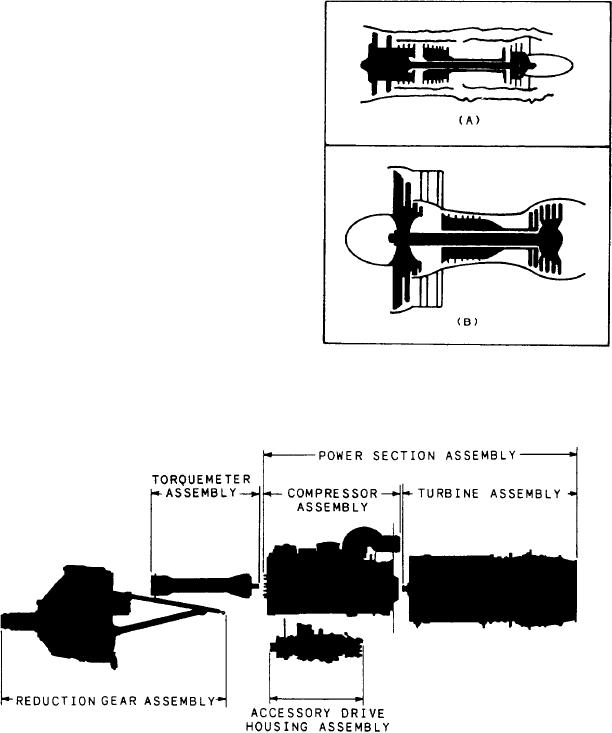
Aeronautical (ANA) Bulletin No. 306. The new
Turboprops
system is under MIL-STD-879 and includes all
newly developed gas turbine engines of the Air
Turboprops have a compressor, combustion
Force, Army, and Navy. ANA Bulletin No. 306
chamber (or chambers), turbine, and jet nozzle,
will remain in effect until all engines manufac-
all of which operate in the same manner as their
tured before the introduction of MIL-STD-879
counterparts in the turbojet. The difference is the
have had a change to the configuration, the
turbine. It sends increased power, generated by
performance or dropped from service.
the exhaust gases passing through additional
stages of the turbine, forward to a reduction gear-
box (fig. 1-12). A propeller mounted on the gear-
box provides thrust for the plane.
Turbofan
The turbofan gas turbine engine is the same
as a turboprop. Except a duct-enclosed, axial-flow
fan (fig. 1-1 3) replaces the gearbox and prop. The
fan is either part of the first-stage compressor
blades or mounted as a separate set of fan blades.
The fan uses 30 to 60 percent of the available
propulsive energy. The propulsive efficiency,
thrust, and specific fuel consumption for the
turbofan engine falls somewhere between those
of the turbojet and the turboprop engines.
ENGINE DESIGNATION SYSTEMS
The engine designation systems use standard
symbols to represent the type, manufacturer, and
model of aircraft engines used in military.
Knowing the designation systems gives you basic
information about the engine.
Two engine designation systems are in use
Figure l-13.-Turbofan engine. (A) With fully ducted fan;
(B) with short duct fan.
today. The old system is under Air Force-Navy
Figure 1-12.-T56 major engine components.
1-8

